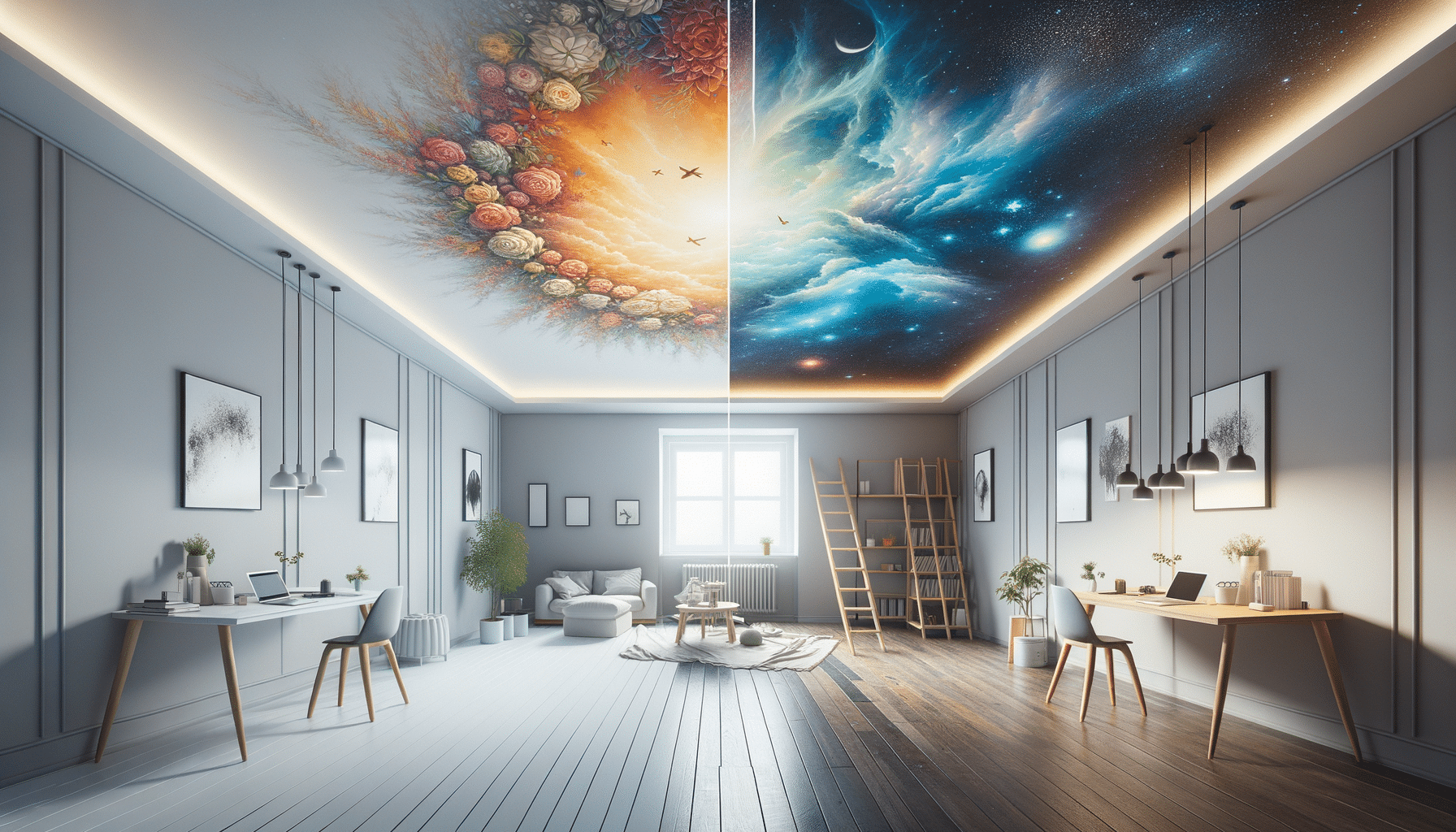
Transform Your Space with Ceiling Painting
The Art and Science of Ceiling Painting
Ceiling painting is not just about aesthetics; it is a blend of art and science that can redefine the perception of space. The ceiling, often referred to as the “fifth wall,” holds the potential to dramatically alter the ambiance of a room. By choosing the right color and technique, you can make a room feel more spacious, cozy, or even more luxurious. The psychological impact of colors is well-documented, with certain shades evoking feelings of calm, warmth, or energy. For instance, lighter colors such as soft whites and pastels can make a room appear taller and more open, while darker shades can add a sense of intimacy and warmth.
Furthermore, ceiling painting involves understanding the interplay of light and color. Natural and artificial lighting can significantly affect how a color appears on the ceiling. It is crucial to test paint samples at different times of the day to see how they interact with the light in your space. This attention to detail ensures that the final result is harmonious and enhances the overall design of the room.
Choosing the Right Color for Your Ceiling
Selecting the right color for your ceiling can be a transformative decision. While traditional white ceilings are popular for their simplicity and ability to reflect light, there are numerous other options that can add character and style to your home. Consider using shades that complement the walls or create a striking contrast. For example, a light blue ceiling can mimic the sky and create a serene atmosphere, while a bold color like navy can add drama and sophistication.
When choosing a color, think about the purpose of the room. Bedrooms may benefit from soothing, muted tones that promote relaxation, whereas a dining room might be enhanced by richer hues that stimulate conversation and appetite. Additionally, consider the architectural features of the room. High ceilings can handle deeper colors without feeling oppressive, while lower ceilings may benefit from lighter tones to avoid feeling cramped.
Techniques for Ceiling Painting
Ceiling painting involves more than just picking a color; the technique used can also significantly affect the final outcome. One popular method is the use of a flat finish, which helps to hide imperfections and creates a smooth, even look. Alternatively, a satin or eggshell finish can add a subtle sheen that reflects light and adds depth to the ceiling.
For those looking to make a bold statement, consider techniques such as stenciling or faux finishes. Stenciling can introduce intricate patterns or designs, adding a personalized touch to the space. Faux finishes, such as marbling or wood grain, can create the illusion of texture and add a luxurious feel to the room. These techniques require precision and skill, so it may be beneficial to consult with a professional to achieve the desired effect.
DIY vs. Professional Ceiling Painting
Deciding whether to tackle ceiling painting as a DIY project or to hire a professional depends on several factors, including the complexity of the design and your own skill level. DIY ceiling painting can be a rewarding experience, allowing you to customize your space according to your personal taste. However, it requires careful preparation, including protecting furniture and floors, and using the right tools to achieve a clean finish.
On the other hand, hiring a professional can save time and ensure a high-quality result, especially for intricate designs or large areas. Professionals have the expertise to handle challenging aspects such as high ceilings or uneven surfaces. They can also provide valuable advice on color selection and technique, helping you achieve the look you envision.
Maintaining Your Painted Ceiling
Once your ceiling is painted, maintaining its appearance is essential to preserve its beauty and extend its lifespan. Regular cleaning is crucial, as ceilings can accumulate dust and dirt over time. Use a soft broom or a vacuum with a brush attachment to gently remove dust. For more stubborn stains, a mild detergent and a soft cloth can be used, but always test a small area first to ensure it does not damage the paint.
In addition to cleaning, consider the long-term effects of environmental factors such as humidity and sunlight. High humidity can lead to peeling or bubbling of the paint, so ensure proper ventilation in rooms like bathrooms and kitchens. If your ceiling is exposed to direct sunlight, consider using UV-resistant paint to prevent fading.


